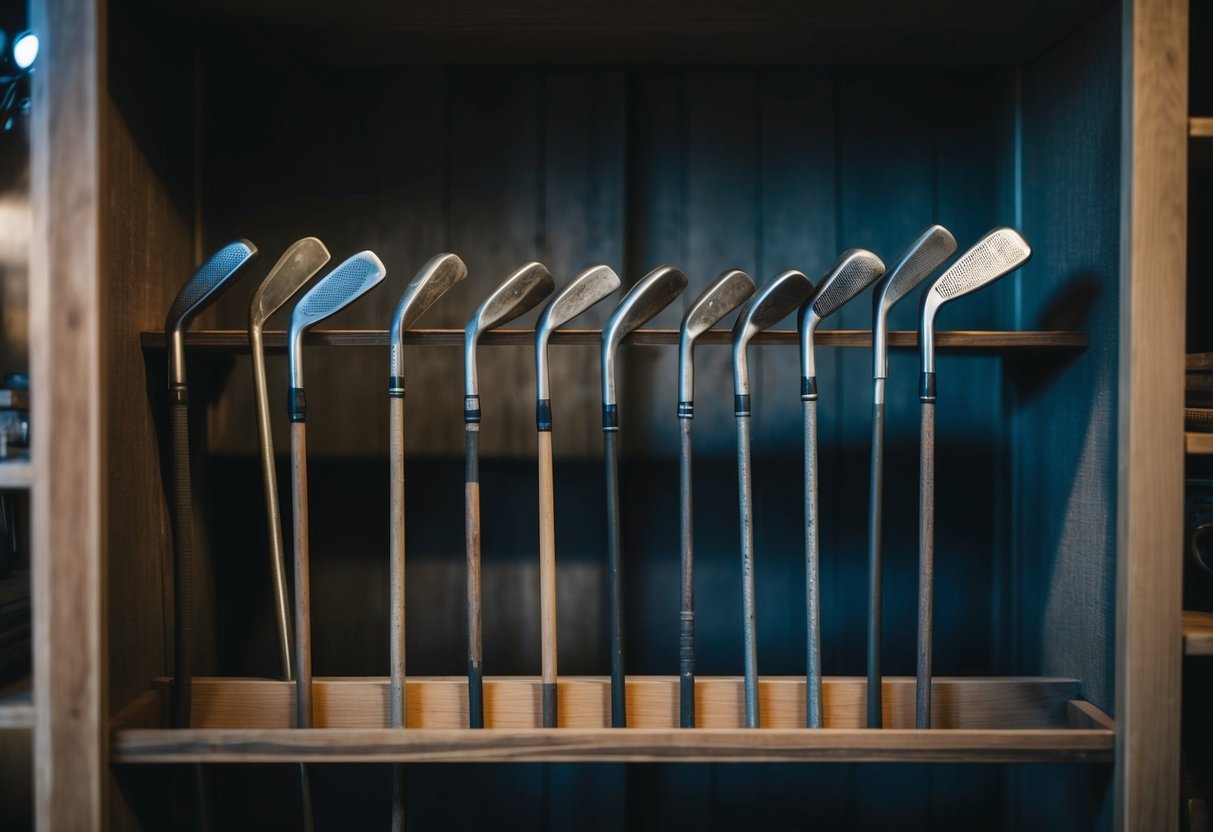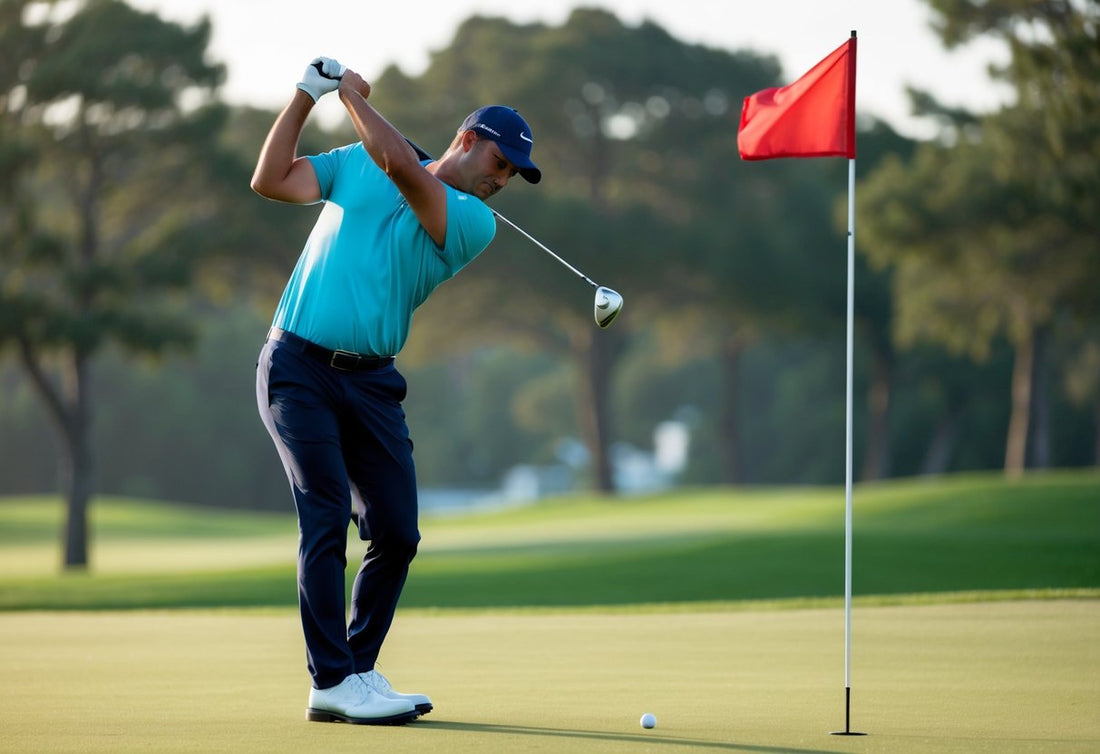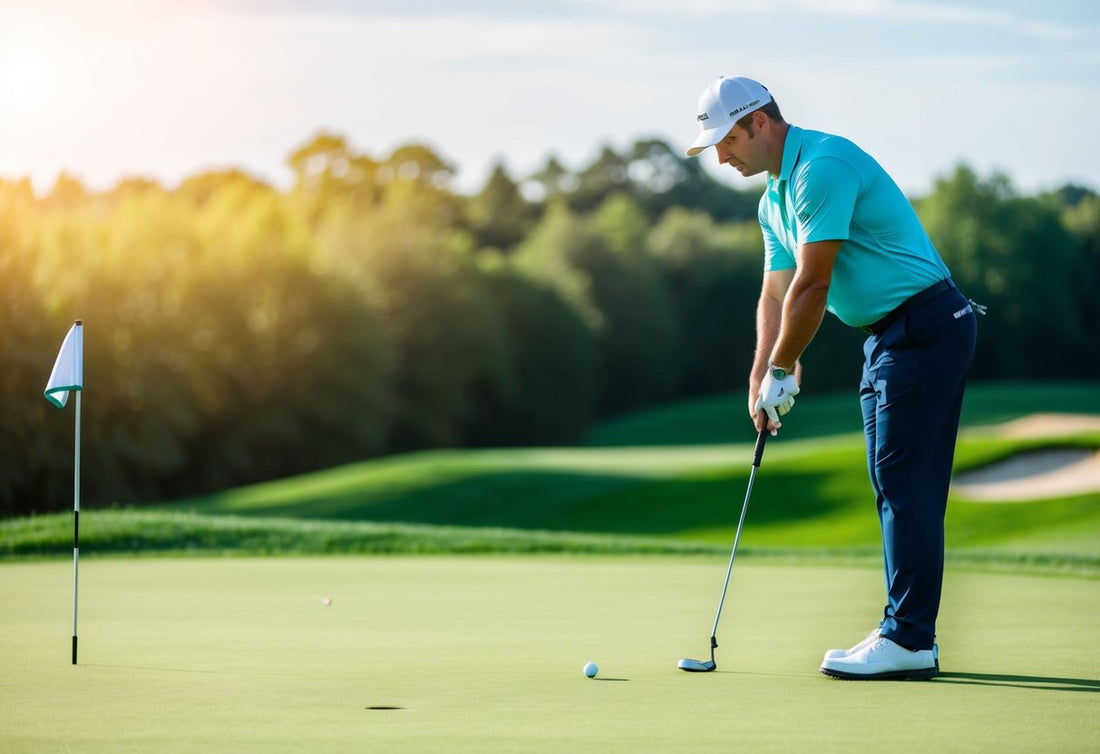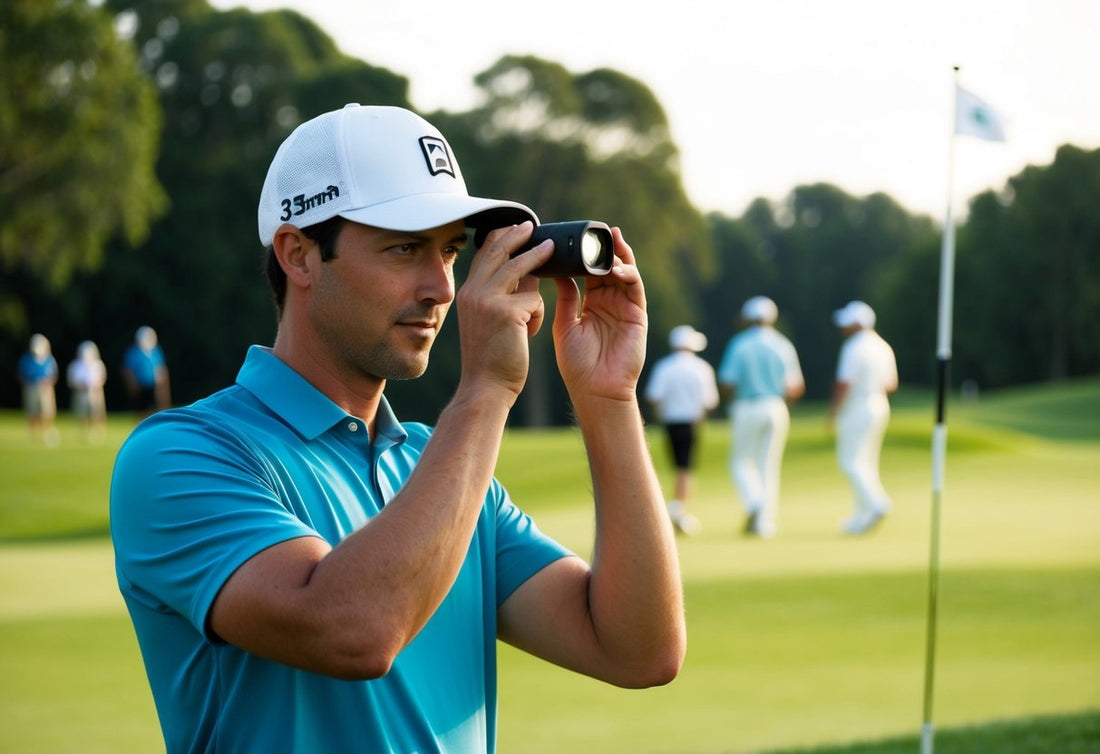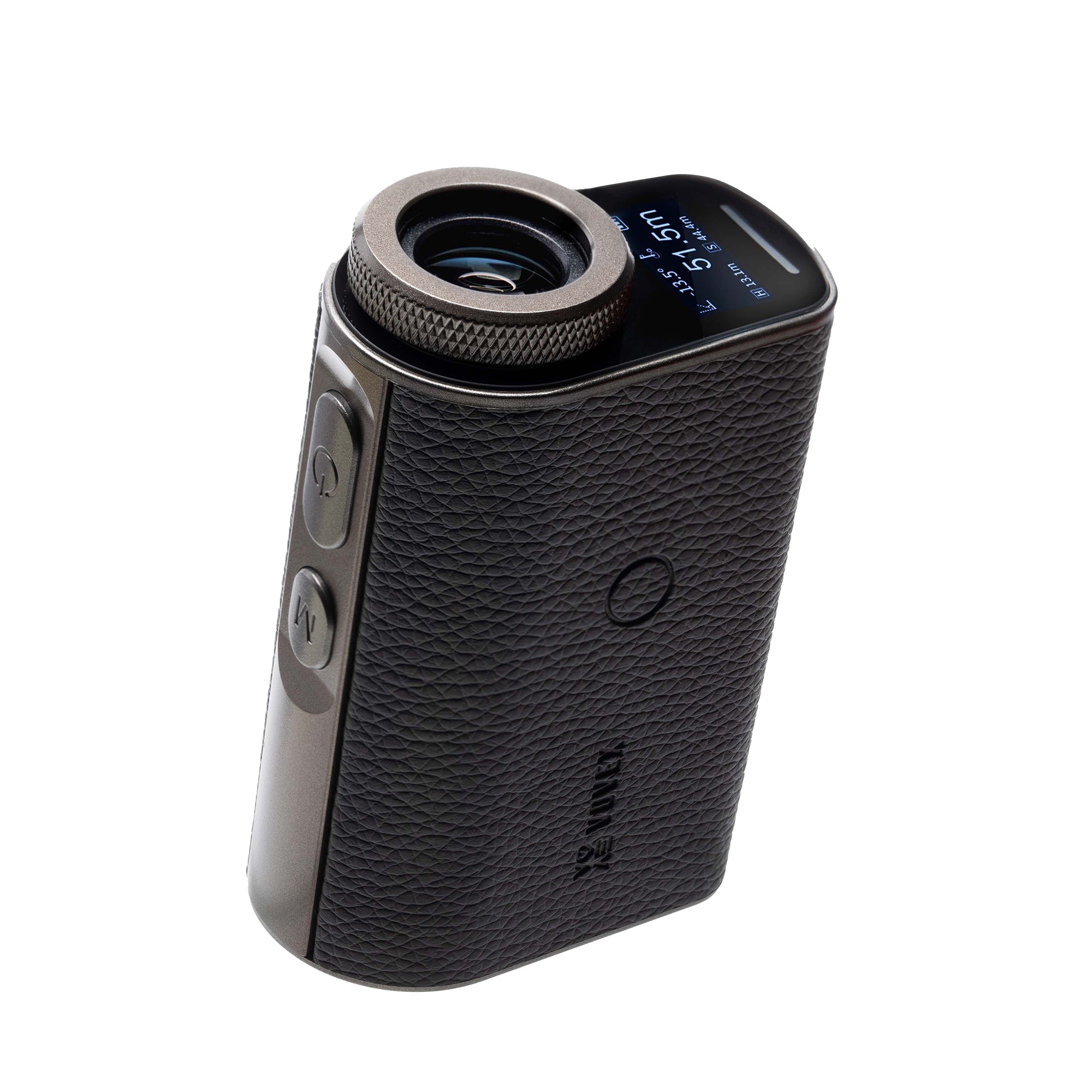Check out our golf rangefinders by Vovex to elevate your game!
Old golf clubs can hold surprising value, especially for collectors and golf enthusiasts. Certain vintage clubs, particularly those from renowned manufacturers or used by famous players, can fetch hundreds or even thousands of dollars. We've seen remarkable examples of antique golf clubs selling for impressive sums at auctions and specialized markets.
The worth of old golf clubs depends on various factors. Age, condition, rarity, and historical significance all play crucial roles in determining a club's value. Some golfers seek out classic persimmon woods or forged blade irons for their unique feel and craftsmanship. Others are drawn to clubs with interesting stories or innovative designs that shaped the game's evolution.
For casual players wondering about the old set gathering dust in the garage, it's worth taking a closer look. While not every old club is a hidden treasure, some may hold more value than expected. Researching the brand, model, and era can provide insights into potential worth and help decide whether to sell, repurpose, or continue using these golf relics.
Key Takeaways
- Vintage golf clubs can be valuable collectibles, with some fetching high prices
- Factors like age, condition, rarity, and historical significance determine a club's worth
- Research and expert appraisal can help assess the potential value of old golf clubs
Historical Value of Golf Clubs
Old golf clubs can hold significant historical and monetary value. Their worth often depends on factors like age, rarity, and association with famous players or events.
Famous Club Makers
We've seen many legendary club makers leave their mark on golf history. Tom Morris Sr., one of the earliest professional golfers, crafted clubs in the mid-1800s that are now highly prized by collectors. His son, Tom Morris Jr., followed in his footsteps, creating clubs that fetch impressive sums at auctions.
In the early 20th century, Robert Forgan & Son produced clubs used by royalty and golf champions. Their hickory-shafted clubs are particularly sought after. Another notable name is George Nicoll of Leven, whose innovative club designs revolutionized the game in the late 1800s.
Iconic Golf Clubs in History
Certain golf clubs have achieved legendary status due to their role in historic moments. Bobby Jones' Calamity Jane putter, used in his 1930 Grand Slam victory, is one of the most famous clubs in golf history. It's estimated to be worth over $1 million today.
Gene Sarazen's Wilson 4-wood, which he used for his "shot heard 'round the world" at the 1935 Masters, is another iconic club. This shot popularized the use of fairway woods in golf.
Ben Hogan's 1-iron, used in his famous shot at the 1950 U.S. Open, is also a piece of golf history. These clubs, tied to pivotal moments, often command high prices and intense interest from collectors and golf enthusiasts alike.
Evaluating Golf Club Worth
Determining the value of old golf clubs involves examining several key factors. These elements can significantly impact a club's worth in the collector's market or for resale purposes.
Material and Craftsmanship
The materials used in old golf clubs play a crucial role in their value. Clubs made from high-quality metals like persimmon wood or forged steel often fetch higher prices. We've seen vintage clubs with intricate designs or unique manufacturing techniques command premium prices.
Craftmanship is equally important. Hand-forged irons or carefully shaped wooden drivers showcase superior skill and attention to detail. These qualities can increase a club's worth substantially.
Condition and Maintenance
The state of preservation greatly affects an old golf club's value. Well-maintained clubs with minimal wear and tear are typically more desirable to collectors and enthusiasts.
We've found that clubs with original grips, shafts, and finishes in good condition often sell for higher prices. Regular cleaning and proper storage can help preserve a club's value over time.
Minor repairs or restorations, if done professionally, may not significantly decrease value. However, extensive modifications or poorly executed repairs can drastically reduce a club's worth.
Rarity and Exclusivity
Rare or limited edition golf clubs tend to be more valuable. We've noticed that clubs from defunct manufacturers or those produced in small quantities often attract higher bids at auctions.
Clubs used by famous golfers or in significant tournaments can also command premium prices. For example, a putter used to win a major championship might be worth substantially more than a similar model without such provenance.
Exclusive designs or clubs made for specific players can be highly sought after. These unique pieces often appeal to serious collectors willing to pay top dollar for rare finds.
Market Trends for Collectible Golf Clubs
We've noticed some interesting shifts in the collectible golf club market recently. Vintage clubs from the 1950s and 1960s are seeing renewed interest among collectors. Brands like MacGregor, Wilson, and Spalding are particularly sought after.
Rare models and limited editions continue to command high prices. A pristine set of Titleist Scotty Cameron putters from the 1990s can fetch thousands of dollars. Similarly, clubs used by famous golfers in major tournaments are highly prized.
The condition of clubs plays a crucial role in their value. Well-preserved items with minimal wear tend to sell for significantly more. Original grips, shafts, and headcovers add to a club's desirability.
Some trends we're seeing:
- Rising demand for persimmon woods
- Increased interest in early cavity-back irons
- Growing market for classic blade putters
Online marketplaces have made it easier for collectors to find and purchase rare clubs. Auction sites and specialized golf forums are popular platforms for buying and selling.
We've also observed a surge in younger collectors entering the market. This new generation is often drawn to clubs from the 1980s and 1990s, which they remember from their childhoods.
Places to Buy and Sell Old Golf Clubs
Golf enthusiasts have several options for buying and selling vintage clubs. We've found that online platforms, traditional auction houses, and specialty shops each offer unique advantages for collectors and sellers.
Online Marketplaces
eBay remains a top choice for buying and selling old golf clubs. We've seen rare finds and great deals on this platform. Sellers can reach a global audience, while buyers benefit from a wide selection.
Facebook Marketplace and Craigslist are ideal for local transactions. We appreciate the ability to inspect clubs in person before purchasing.
Specialized golf forums like GolfWRX have active buy/sell sections. These communities often attract knowledgeable collectors who understand the value of vintage clubs.
Auction Houses
Christie's and Sotheby's occasionally feature high-end golf memorabilia in their sports auctions. We've noticed these events attract serious collectors and investors.
Golf-specific auction houses like The Golf Auction focus exclusively on clubs and memorabilia. Their expertise can be invaluable for authenticating rare items.
Local auction houses sometimes include golf clubs in estate sales. We've found these can be great opportunities for unexpected discoveries.
Golf Collectors' Shops
Brick-and-mortar shops specializing in vintage golf equipment are treasure troves for enthusiasts. We love browsing these stores for their curated selections and knowledgeable staff.
Some popular shops include:
- Lost Golf Balls (Texas)
- Pete's Golf Shop (New York)
- Louisville Golf (Kentucky)
Many of these stores also have online presences, combining the benefits of physical and digital marketplaces.
We've found that building relationships with shop owners can lead to first dibs on new acquisitions and fair pricing for both buyers and sellers.
Making the Most Out of Old Clubs
Old golf clubs can still serve valuable purposes with a bit of creativity and care. We'll explore ways to breathe new life into these classic pieces of equipment.
Restoration Tips
Cleaning is the first step in restoring old clubs. We use warm soapy water and a soft brush to gently scrub away dirt and grime. For stubborn rust, fine steel wool works wonders.
Refinishing club heads can make them look brand new. We sand them lightly, then apply a fresh coat of paint or chrome plating.
Regripping breathes new life into old clubs. We remove the old grip, clean the shaft, and apply a new grip with specialized adhesive.
For wooden clubs, we carefully sand and re-stain the heads to restore their classic beauty.
Display Ideas
Old clubs make fantastic decorative pieces. We love creating a vintage club wall display in home offices or game rooms.
Shadowboxes showcase individual clubs beautifully. We mount them with scorecards or photos for a personalized touch.
Repurposing clubs as coat racks or towel holders adds unique flair to mudrooms or bathrooms. We secure the club heads to a wooden plank for a sturdy, eye-catching fixture.
Golf club lamps are another creative option. We drill through the shaft to run wiring and attach a shade for a one-of-a-kind lighting solution.
Appraisal and Authentication
Determining the value and authenticity of old golf clubs requires expertise. We'll explore professional appraisal services and methods for identifying counterfeits to help golfers navigate this specialized market.
Professional Appraisal Services
Professional appraisers play a crucial role in valuing vintage golf clubs. We recommend seeking out experts who specialize in golf memorabilia for the most accurate assessments. These appraisers often have extensive knowledge of club history, materials, and market trends.
Many auction houses and golf museums offer appraisal services. They typically examine factors like:
- Brand and model
- Age and condition
- Rarity and historical significance
- Market demand
Fees for appraisals vary, but expect to pay $50-$200 per club or set. For valuable collections, this investment can be worthwhile to ensure proper insurance coverage or fair pricing for sale.
Identifying Counterfeits
Counterfeit golf clubs pose a significant challenge in the vintage market. We've found several key indicators to help spot fakes:
- Serial numbers: Check for authenticity on manufacturer websites.
- Materials: Genuine clubs often use higher-quality metals and woods.
- Craftsmanship: Look for precise detailing and consistent finish.
- Weight: Counterfeits may feel lighter or unbalanced.
Reputable sellers usually provide certificates of authenticity for rare or valuable clubs. We always recommend purchasing from trusted sources and comparing clubs to known authentic examples when possible.
UV light tests can reveal hidden markings on some genuine clubs. For high-value items, consider consulting authentication services that use advanced techniques like material analysis and 3D scanning.
Golf Clubs as an Investment
We've seen some vintage golf clubs fetch impressive prices at auctions. Certain rare or historically significant clubs can be valuable collector's items.
Clubs used by famous players or in major tournaments often command higher prices. For example, a putter used by Tiger Woods sold for over $150,000 at auction.
Condition is crucial for investment-grade clubs. Well-preserved clubs in original bags or with documentation tend to be worth more.
Some brands and models are particularly sought after:
- Scotty Cameron putters
- Ping Eye2 irons
- Certain MacGregor woods
It's important to note that most old clubs aren't valuable investments. Mass-produced clubs from recent decades typically don't appreciate much.
For serious investing, we recommend focusing on:
- Pre-1930s clubs
- Clubs with provenance (famous players/tournaments)
- Rare prototypes or limited editions
Storing clubs properly is essential to maintain their value. Climate-controlled environments help prevent deterioration.
We always suggest consulting experts or appraisers before making significant investments in vintage golf clubs. The market can be complex and unpredictable.
Frequently Asked Questions
Old golf clubs can be quite valuable, especially rare or historically significant ones. Collectors and enthusiasts often seek out vintage clubs for their craftsmanship and nostalgia.
What are the most valuable vintage golf clubs?
Clubs from the late 19th and early 20th centuries tend to be most valuable. Rare putters by Scottish clubmakers like Hugh Philp can fetch thousands of dollars. Early metal-headed drivers from the 1920s-30s are also highly prized.
How can I find out the value of my old golf clubs?
We recommend consulting golf memorabilia experts or appraisers. Online auction sites can give a sense of market prices. Golf collecting guides and price lists are also helpful resources for researching values.
Where is the best place to sell vintage golf clubs?
Specialty golf auctions often bring the highest prices for rare clubs. Online marketplaces like eBay reach a wide audience of collectors. Local golf shops or antique dealers may also purchase vintage clubs.
Can vintage wooden golf clubs be of significant value?
Absolutely. Well-preserved wooden clubs, especially those from renowned makers, can be worth hundreds or thousands of dollars. Playable antique woods are particularly desirable to some collectors.
Do golf clubs over 25 years old still hold any playability or value?
Many clubs from the 1990s and earlier remain playable, though technology has advanced. Certain models have become collectible. Some golfers prefer the feel and craftsmanship of older clubs.
Are there any specific golf club brands or models that are particularly sought after by collectors?
Early Ping putters, like the Anser model, are highly collectible. Rare MacGregor clubs from the mid-20th century are valuable. Limited edition or prototype clubs from major manufacturers often command high prices.


